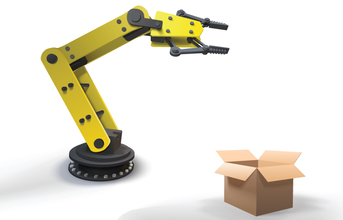
Mahesh Bhangale, GM Manufacturing, Racold Thermo, says that with automation, output is no more dependent on operator's skill. "As we achieve consistency in automation, variation in the process minimises,
which results in better quality. In our company after shifting to Robotic pipe welding, we have achieved five times better productivity with rework reduction. This automation also helped us in achieving uniform weld penetration with good & consistent weld finish (earlier which was dependent on operator's skill)."Vishal Nerurkar, VP - Management System, TÜV SÜD South Asia, points out that Indian manufacturing is largely aligned to
global requirements and is no longer an isolated manufacturing hub catering only to domestic consumption. "In an emerging market like India that has put such a great impetus on the ‘Make in India' initiative, mass production of high quality has become the primary motivator for applying automation.
"Higher production rate along with increased productivity, efficient use of materials, better product quality, improved safety, and reduced turn-around time are some of the advantages commonly attributed to automation. Automated processes and solutions are simple to operate, reliable in terms of output, quality, provide easy customisation and most importantly result in cost effectiveness. Process automation enables enhancement of product quality, improve process safety thereby ensuring efficient use of resources."
Blending with manufacturing principles
Most production facilities follow some kind of manufacturing principle to bring discipline and standardisation to the processes. So how can the automated system blend with the different manufacturing principles?
Mallavarapu shares that at Centum, the New Product Introduction (NPI) are typically designed with modular manufacturing setups along with automation solutions that are evaluated and modified to suit the lean manufacturing environment and creating a collaborative platform to improve the productivity, yield, quality and customer satisfaction. "We also typically practice Value stream Mapping, identify MUDA thorough "TIMWOOD" and design automation solutions into manufacturing and business processes which brings in standardisation. In summary the road to automation has be well thought out and finely balanced initiative keeping in mind all the aspects of World Class Manufacturing (WCM) as well market trend."
Bhangale from Racold Thermo underlines that automation helps to achieve single piece flow, which reduces the WIP, hence is helpful for JIT. "Consistent repeatability is achieved with automation which reduces variation in process & helps in abiding the principles of Lean Manufacturing & WCM. To optimise the result of automation it is suggested to involve lean / WCM team in designing stage, who have to work on work place origination, ergonomics, ease of Autonomous & preventive maintenance. We follow WCM in our origination, hence right from design stage of automation we activate EEM (Early Equipment Maintenance) pillar of WCM in Automation & prepare machine ledger, EVO, etc. EEM pillar also takes the inputs from WO (Work place organisation), AM, PM & logistics pillar."
(Continued on next page)


























